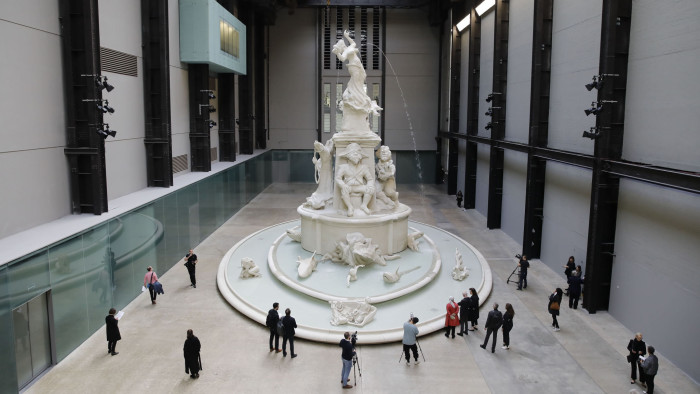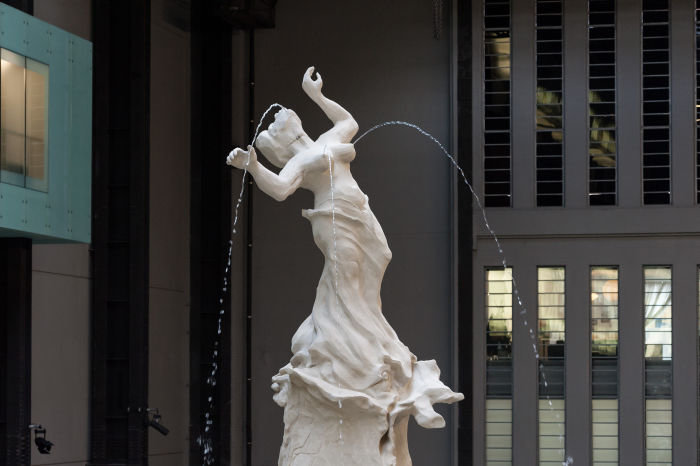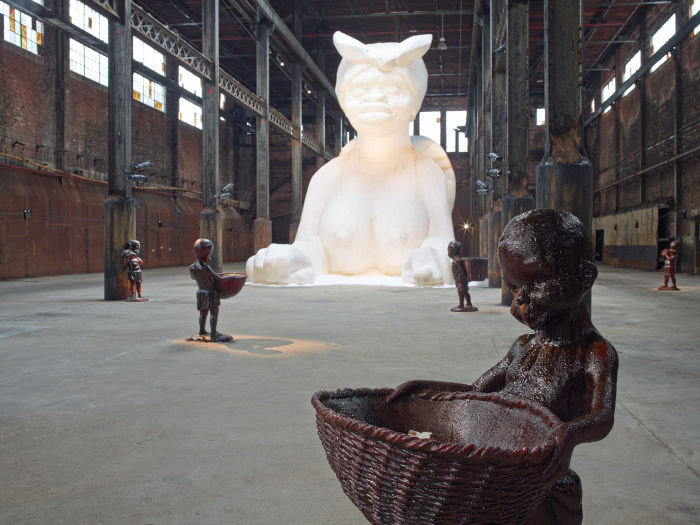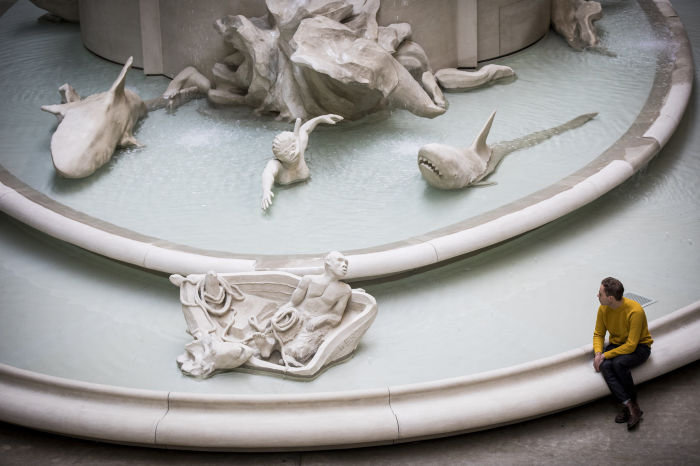Kara Walker at Tate Modern — a fierce, funny diatribe against the British empire

Roula Khalaf, Editor of the FT, selects her favourite stories in this weekly newsletter.
The Turbine Hall at Tate Modern is a tough gig. At 35m high and 155m long, it’s as big as a cathedral and as bleak as a canyon. It’s also essentially a corridor — somewhere visitors pass through en route to one or other of the museum’s wings. Over the years, some artists — such as Doris Salcedo and Tania Bruguera — have gone for subtlety over spectacle. But on balance, this leviathan is best met on its own terms. Go big or go home, it booms. Woe betide the artist who flunks it.
The American artist Kara Walker has risen to the challenge. Her offering, a faux-Baroque fountain named “Fons Americanus”, surges 13 metres high to fill the far hall as exuberantly as the Fontana Trevi in its Roman piazza.
The Italian version was designed to celebrate the taming of the waters through a cornucopia of marine deities and monsters. Walker’s cascade, by contrast, is a manifesto for freedom.

From the female figure on the peak — who is arched back in ecstasy/agony, a deep cut in her throat — to the sea captain planted below her, and the sharks gasping their last breath in the shallows, Walker has transformed her material (a non-toxic, sustainable, fake marble) into a brave, fierce, kooky diatribe against the British empire — a crucial engineer of the transatlantic slave trade — and the public monuments that celebrate it. At the same time, she is talking back to her homeland, where a debate is raging over Confederate monuments. And surely she is also taking a cheeky swipe at her host whose founder, Henry Tate, was himself a sugar baron?
Walker is best known for her 2014 sculpture “A Subtlety”, a sphinx-like character installed in a Brooklyn sugar factory. Since she emerged in the 1990s, she has made her name through potent visual statements which employ the racist Antebellum tropes of black people — big lips, flat features — in order to critique racism. As a result, she herself has been accused of reinforcing stereotypes.

In truth, Walker’s reappropriation of mass imagery sees her following in the footsteps of Pop artists such as Andy Warhol (whom she revered as a child). Here at Tate, you could spend a week unpicking her sources. Inspiration for her fountain’s basic template came from the Queen Victoria Memorial outside Buckingham Palace, which uses classical iconography to laud the Queen as the personification of truth and justice.
The London monument is topped with a bronze statue of Winged Victory, but Walker’s lofty goddess is an African-Caribbean incarnation of Venus. Apparently she was also influenced by the engraving from around 1800 known as “The Voyage of the Sable Venus from Angola to the West Indies”. This nasty piece of slave-trade propaganda refigures the deity as a black woman on a scallop shell borne by white cherubs. Naked save for a loincloth, she is apparently serene at the destiny that awaits her.

Planted at the front of Walker’s monument, a black sea captain riffs on the Haitian revolutionary leader Toussaint Louverture and the Jamaican activist Marcus Garvey, among others. A noose hung over a branch instantly evokes the horror of lynching. Other references include Turner’s painting “The Slave Ship”, which shows slaves being thrown overboard into a turbulent sea, and Winslow Homer’s “The Gulf Stream”, which shows a black man trapped in a rowing boat during a storm as sharks circle in the surrounding waters.
Here in the Turbine Hall, the tempest is chiefly within ourselves. It’s impossible to gaze up at Walker’s fountain — so familiar in its classical grandiloquence, yet so transfigured and troubling — and not feel a surge of emotion. Whether it is anger, shame, guilt, awe, joy, irritation — or a mixture of all these and more — depends on what we bring with us into the room.

The water is unambiguously inspirational. At a moment when second-rate audio disguised as “sound art” is the bane of numerous installations, the roar of rushing water — accompanied by the visual feast of its soaring, crystalline curve — turns out to be the perfect complement to a cry for liberty. The metaphors here are limitless: from the concept of taking back the Atlantic which proved so deadly for Africans en route to slavery, to the doughty protesters in Hong Kong who find motivation in Bruce Lee’s injunction to “be like water”.
Finally, an extra point for those suffocating sharks. These are not, Walker tells us, simply a nod to the aforementioned painted predators, or even a dark parody of the benign dolphins beloved of Bernini and his ilk. They are also a mischievous death knell for Damien Hirst’s pickled captives. The result is a triumph of post-Pop art that is as funny as it is furious. Walker’s South Bank residency may be temporary but the echo of her sparkling streams will linger.
To April 5, tate.org.uk

Comments